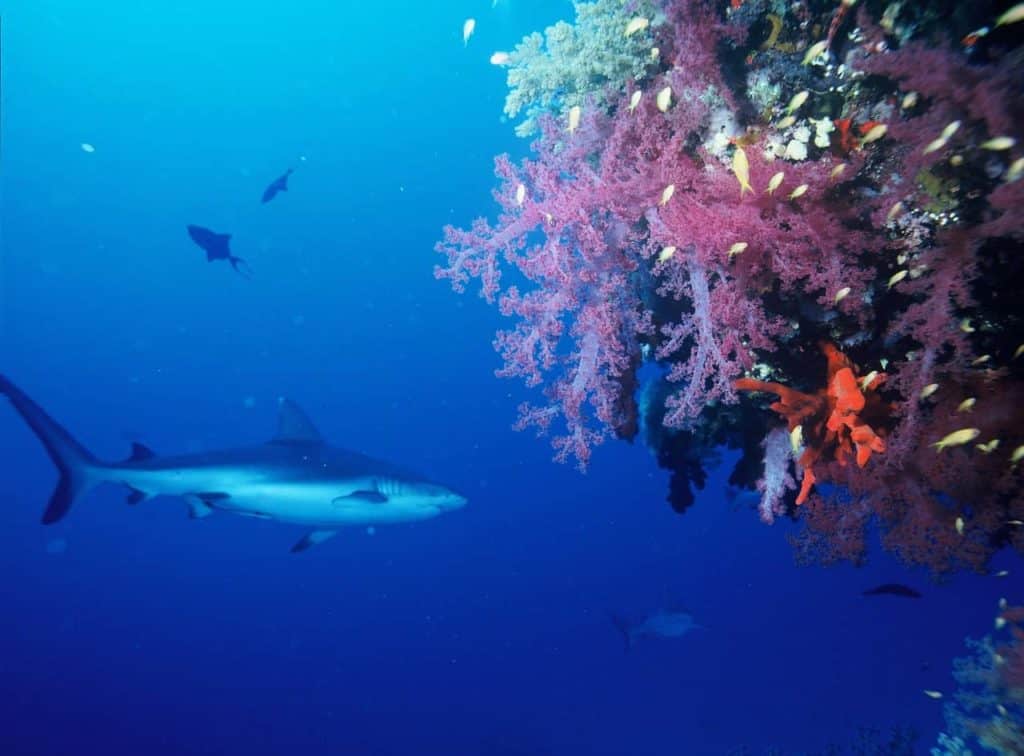Dive into Adventure: Exploring Cozumel’s Shark Encounters
Get to experience a Cozumel encounter with sharks. Cozumel’s crystal clear waters make it a top destination for divers around the world. Cozumel is a diving paradise within the Mesoamerican Barrier Reef. It’s home to corals, fish, and invertebrates, including sharks. Join us as we explore the most common sharks you’ll see during your scuba diving adventures or while staying at Stingray Villa.
Sharks You Might Meet in Cozumel
Beneath the turquoise surface, Cozumel hosts an impressive variety of sharks—each with its own unique role in the reef’s vibrant ecosystem. From calm nurse sharks napping on the seafloor to the awe-inspiring presence of bull sharks, this island offers encounters for every level of adventure.
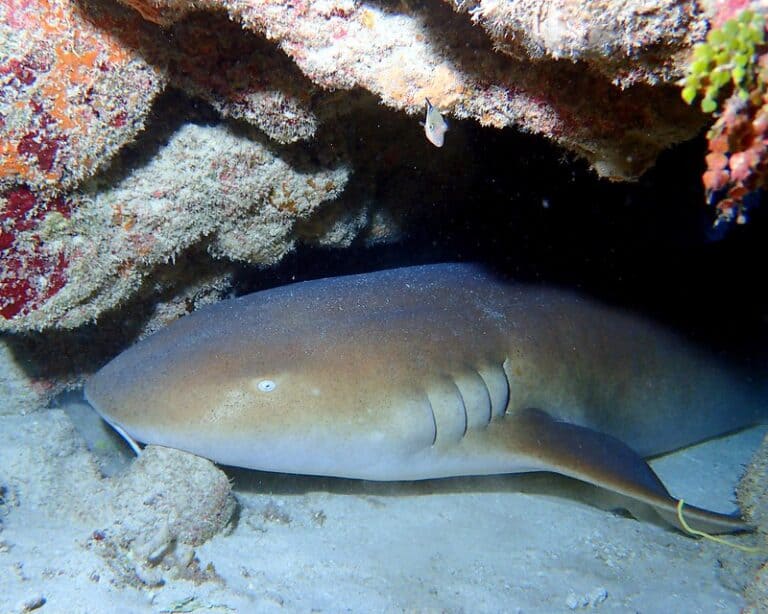
Nurse sharks:
This is the most common shark in Cozumel waters. Nurse sharks are slow-moving bottom dwellers and harmless to humans. Many divers in Cozumel see nurse sharks because, during the day, they like to rest on the sandy bottom underneath ledges or in crevices. But they can be big, up to 14 feet, have powerful jaws with thousands of tiny serrated teeth, and will bite if stepped on or disturbed by divers who think they’re gentle. They use their powerful jaws to crush shellfish but prefer to eat fish, shrimp, and squid. They’re gray-brown in color and have long tail fins up to one-fourth of their total length. Unlike most other sharks, nurses are smooth to the touch. Nurse sharks also feed on sea snakes.
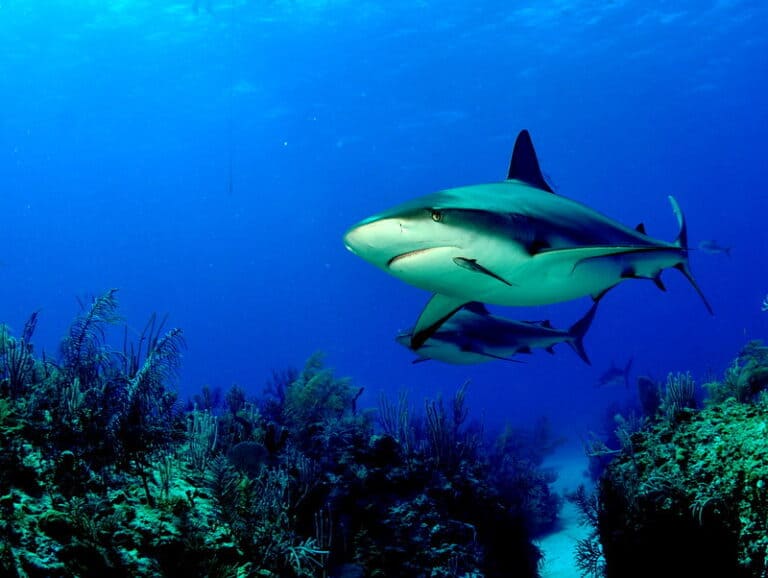
Caribbean Reef Sharks:
The Caribbean Reef Shark is considered passive and rarely poses any threat to scuba divers, snorkelers, swimmers, or humans it comes into contact with. They avoid human interaction altogether. Also known as the “Reef Shark,” it has a unique color: white to light yellow on the belly and gray-brown to dark gray on the back. It has larger eyes and a rounded and short snout compared to other sharks. The Caribbean Reef Shark finds food in the reefs, such as bony fishes, crustaceans, and cephalopods. We also know they feed on yellow stingrays and eagle rays.
While these sharks tend to be elusive and often remain out of sight, their presence is vital to the health of Cozumel’s marine ecosystem. Acting as silent guardians, Caribbean Reef Sharks help maintain the delicate balance of life on the reef by controlling fish populations. Without them, the vibrant coral environments we love to explore wouldn’t be nearly as healthy or stunning. So, even if you don’t spot one during your dive, know that their influence is everywhere beneath the waves.
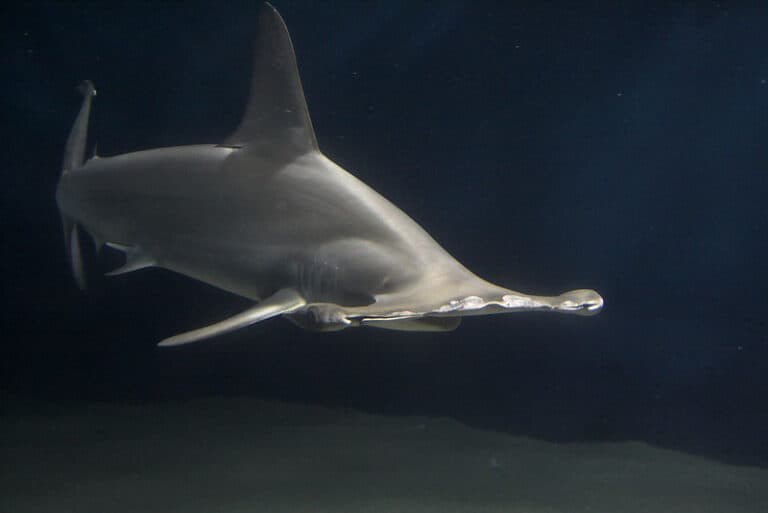
Hammerhead Sharks:
The hammerhead shark is the most elusive shark in Cozumel. In 20 years I have only seen one on the reefs. Lately, we have seen hammerhead sharks eating Eagle Rays and giving birth in the shallow waters around Cozumel.
Cozumel’s reefs also serve as an important nursery for these fascinating creatures. During the summer months, it’s not uncommon for the shallow waters to fill with baby hammerheads—tiny versions of these ocean lords, swimming in the warm, protected shallows. Their presence is a reassuring sign that the local shark population is healthy and thriving. And if you happen to spot a baby hammerhead gliding by, don’t be surprised if its unique, flattened head brings a smile to your face behind the mask.
They like to eat animals like other sharks, squids, crabs, jacks, herrings, tarpon, sardines, boxfish, toadfish, sea catfish, groupers, and their favorite dish, rays. They hunt their chosen prey twice a day, at dawn and dusk. The most well-known fact about them would have to be their namesake. Their flat, T-shaped heads make them stand out from other sharks.
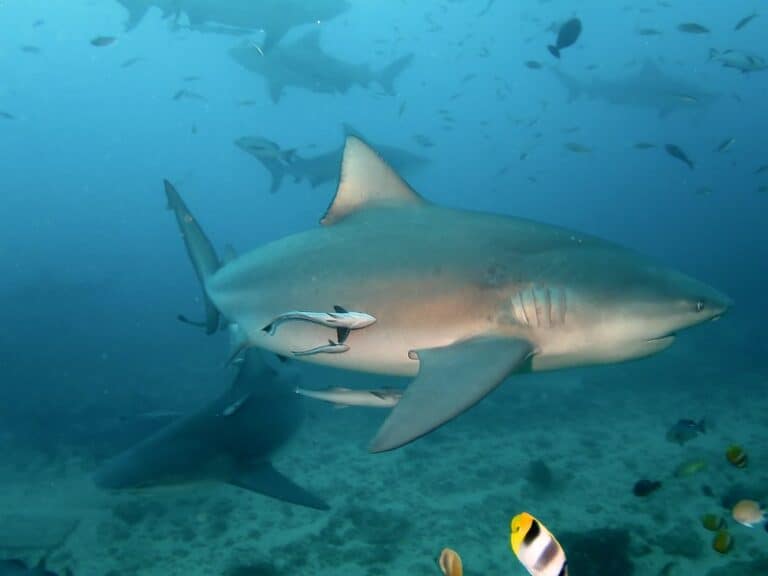
Bull Sharks:
These are beautiful creatures. They can be bigger than any scuba diver and are sleek and powerful. Bull sharks are highly adaptable, thriving in both saltwater and freshwater environments. Other fish seem slightly more cautious when you see them on the reef. Divers have seen bull sharks on the Playa del Carmen reefs for over 30 years. Los Arcos, one of the most popular deep dive sites north of Playa del Carmen, used to be called Sharkies Place, and it was named after the common shark sightings, not the swim-throughs. These are more elusive in Cozumel than the hammerheads.
What to Expect on a Bull Shark Diving Excursion from Cozumel
Curious about what a bull shark diving trip from Cozumel actually involves? Here’s how a typical adventure unfolds.
You’ll usually set out early in the morning, departing from Cozumel and hopping on the ferry across to Playa del Carmen. Once you arrive, you’ll meet up with your dive operator—seasoned guides who know the area and the behavior of these powerful sharks. After getting your gear sorted, the group heads to well-known dive spots like Barracuda or Punta Piedra. These sites are famous for their clear visibility and, if you’re lucky, close encounters with bull sharks.
Between dives, it’s common to take a break for lunch—often at one of the all-inclusive resorts on the mainland, like the Iberostar Quetzal—where you can refuel and swap shark stories with other divers.
The main event happens in the early afternoon. Your guide will brief everyone on important safety procedures and describe what to expect once you’re in the water. As you descend, keep your eyes peeled: bull sharks can reach impressive sizes and command the respect of every fish on the reef, including divers.
Throughout the dive, guides carefully follow strict environmental protocols to protect both wildlife and people. They’ll watch over the group, making sure everyone keeps a respectful distance. While bull sharks are magnificent and awe-inspiring, the focus is on observing them with minimal disturbance—letting you witness their grace in their natural environment.
After surfacing, the group gradually makes its way back to Cozumel, arriving in the evening—tired, thrilled, and with a new appreciation for these apex predators. If you’re after excitement paired with responsible interaction, a bull shark dive is hard to top.
Best Time of Year to See Sharks in Cozumel
Shark sightings in Cozumel vary throughout the year, depending on the species you’re hoping to encounter. Timing your visit can make a big difference if you have a particular favorite in mind.
Whale Sharks:
If swimming with the ocean’s gentle giants is on your bucket list, plan your trip between May and September. During these warmer months, whale sharks frequent the area north of Cozumel and Isla Holbox, drawn in by abundant plankton blooms. June through August is prime time for these massive filter feeders.Bull Sharks:
For those eager to spot bull sharks, the best window is from November to March, with sightings peaking between December and March. Pregnant females often visit the shallows near Playa del Carmen during this period, taking advantage of the calm, food-rich waters to give birth. Many divers visit specifically in winter to observe these impressive predators.Other Shark Species:
Nurse sharks, Caribbean reef sharks, and the elusive hammerhead are generally present all year. With the Mesoamerican Barrier Reef providing a steady supply of food and shelter, you’re likely to encounter these species regardless of season, especially while diving the island’s most popular reefs.
Cozumel’s consistent water temperatures—hovering between 27°C and 29°C (80°F to 84°F) throughout the year—and steady currents create the perfect environment for a thriving shark population. No matter when you visit, the odds are good you’ll cross paths with one of these fascinating creatures, whether they’re resting under ledges, cruising along the drop-offs, or patrolling the sandy bottoms.
Shark Habitats and Behavior
Sharks in Cozumel inhabit various environments, from the vibrant coral reefs to the rocky crevices and sandy bottoms. The Mesoamerican Barrier Reef, the second-largest reef system in the world, offers a diverse range of habitats where these magnificent creatures can thrive. Coral reefs, in particular, provide a complex structure that allows sharks to hunt, rest, and hide from predators.
Each shark species in Cozumel exhibits unique behaviors. Nurse sharks, for instance, are often found resting on sandy bottoms or tucked into crevices during the day. They are generally docile and peaceful, making them a familiar sight for scuba divers. Bull sharks, on the other hand, are more aggressive and powerful, feeding on a wide variety of prey. These sleek predators are known for their impressive strength and agility. Meanwhile, the gentle giant of the sea, the whale shark, glides through the warm waters, feeding on small fish and plankton.
Understanding these sharks’ natural habitat and behavior is essential for scuba divers and snorkelers. By recognizing the different environments and behaviors of sharks in Cozumel, divers can better navigate the waters and appreciate these magnificent creatures in their natural habitat.
Shark Encounters and Safety
While shark encounters in Cozumel are relatively rare, scuba divers and snorkelers must be aware of the risks and take necessary precautions. Cozumel’s most common shark species are nurse sharks, Caribbean reef sharks, and bull sharks.
To minimize the risk of shark encounters, divers should:
- Dive with a reputable operator who knows the waters and can provide guidance on shark behavior. Look for dive centers that prioritize safety and environmental responsibility, employing experienced guides who understand shark behavior and the local marine environment. Small group sizes not only enhance diver safety but also reduce stress on the sharks themselves. Make sure your chosen operator follows strict safety protocols—there’s no room for improvisation when it comes to encounters with these powerful creatures. Finally, always choose centers that respect marine life and never engage in practices like feeding sharks, which can disrupt their natural behavior and ecosystem balance.
- Avoid diving in areas with known shark activity or during peak shark hours (dawn and dusk).
- Stay calm and composed during encounters, avoiding sudden movements that may provoke the shark.
- Keep a safe distance from sharks, at least 10-15 feet (3-4.5 meters) away.
- Avoid wearing shiny jewelry or bright clothing that may attract sharks.
In the unlikely event of a shark encounter, divers should remain calm and follow established protocols. By being aware of the risks and taking necessary precautions, divers can enjoy a safe and memorable experience in Cozumel’s waters.
Tips for Responsible Shark Encounters
Beyond the basics, a little extra mindfulness can go a long way toward ensuring a safe and respectful interaction with these incredible creatures:
- Respect the Sharks: No touching, chasing, or sneaking in for a selfie. These are wild animals, not aquarium props.
- Keep Your Distance: Watching from afar allows sharks to display their natural behaviors and keeps everyone safe.
- Follow Your Guide’s Instructions: Dive guides are there for a reason—they know the local conditions and shark behavior best.
- Choose Your Dive Center Carefully: Experienced operators can make all the difference when it comes to both safety and enjoyment.
Remember: a calm, respectful approach not only keeps you safe but also helps ensure that future visitors can continue to enjoy Cozumel’s remarkable marine life. When you do it right, you’re likely to come home with breathtaking stories, newfound respect for sharks, and maybe just a little bit of bragging rights.
Ethical and Environmentally-Conscious Dive Operators
Choosing an ethical and environmentally-aware dive operator isn’t just about your safety—it’s about protecting the sharks and the reef for future generations. The way a dive is conducted can have a big impact on both marine life and the quality of your experience.
Here’s what to look for and why it matters:
- Expertise in Shark Behavior: Reputable operators have guides who understand shark behavior, ensuring respectful interactions and helping you recognize safe limits.
- Established Safety Procedures: Operators committed to ethical practices follow strict dive protocols, reducing risks for both divers and sharks.
- Smaller Group Sizes: Responsible operators limit group sizes, minimizing stress for the animals and allowing for better, more personal encounters.
- No Baiting or Feeding: Avoid any operators who promote attractant methods like feeding or baiting sharks. These practices disrupt natural behaviors and can lead to negative long-term effects on the marine ecosystem.
- Respect for Marine Life: Good dive operators will emphasize not touching, harassing, or crowding sharks or other marine creatures, preserving their natural habits and environments.
By supporting dive shops that prioritize marine conservation and animal welfare, you contribute to the ongoing health of Cozumel’s reefs and its remarkable shark populations. Making an informed choice benefits both your experience and the thriving underwater world of the Mesoamerican Barrier Reef.
Conservation Efforts
Conservation efforts are vital to protect Cozumel’s shark population and balance the marine ecosystem. The Mesoamerican Barrier Reef, a UNESCO World Heritage Site, is a crucial ecosystem supporting diverse marine life, including sharks.
Several organizations and initiatives are dedicated to protecting the shark population in Cozumel. The Cozumel Reef National Park provides a protected area where sharks and other marine life thrive. The Shark Conservation Society promotes shark conservation and education in Cozumel, raising awareness about the importance of these apex predators. Additionally, the Marine Conservation Institute conducts research and advocacy to protect marine ecosystems, including those in Cozumel.
By supporting these conservation efforts and promoting sustainable tourism practices, visitors to Cozumel can help protect the shark population and preserve the beauty of the Mesoamerican Barrier Reef for future generations.

